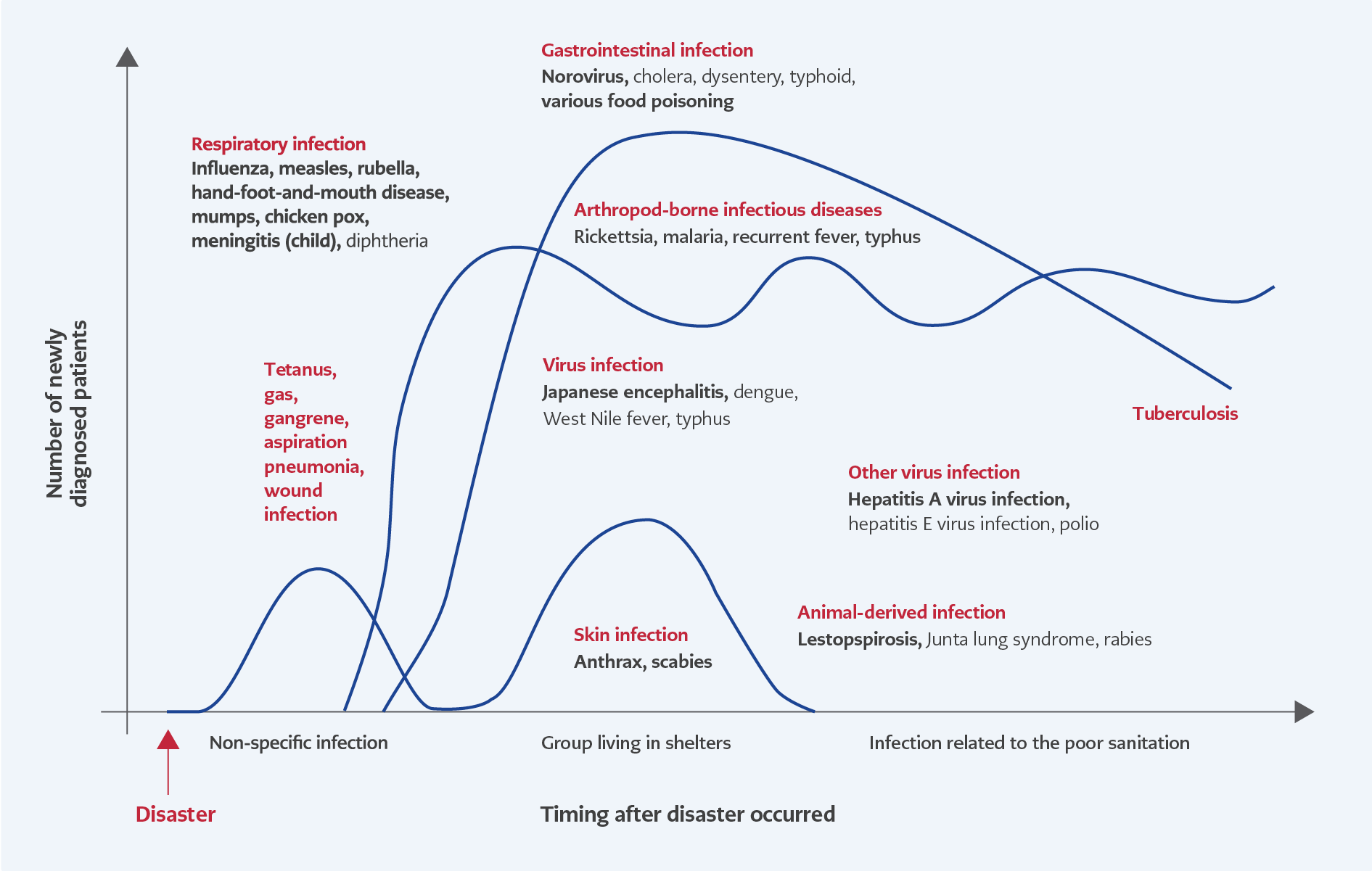There have always been natural disasters in the Anatolian Peninsula, sometimes large enough to lead to vanishing civilizations (1). The recent strong twin earthquakes that occurred within a day in the Southeastern part of Türkiye caused devastating loss of lives and property.
Although severe tremors are the main culprit of immediate destruction, the problems following the initial shock may also cause significant health concerns. Among them, infectious diseases are the most important ones. The increasing risk of infectious diseases is due to a series of factors: lack of clean water supply and sanitation systems. Destructed water and sewage pipes may lead to contaminated water and, if ingested by the people, can cause several severe gastrointestinal infections, including cholera, enteric fever, and hepatitis A. Besides gastrointestinal infections, respiratory infections (such as influenza, COVID-19, and adenovirus) and vectorborne infections could cause outbreaks in the region. A timeline of infectious diseases after a natural disaster was recently reviewed and summarized in Figure 2 (2). However, one should keep in mind that there is no set timetable for when specific infectious diseases will appear in the aftermath of an earthquake, as the risk of emerging infections depends on a variety of factors, including the extent of damage to infrastructure, the availability of clean water and sanitation facilities, and the response of healthcare providers and government agencies. Another factor responsible for the spread of infections is the displacement of people from their damaged homes to crowded, unsanitary conditions (e.g., tent camps).
Preventing infectious diseases and epidemics in extreme conditions would require a concerted effort between government agencies, non-governmental organizations (NGOs), and healthcare workers. Priority should be given to providing clean water and proper sanitary and sewage systems. In addition, essential medicines, including antibiotics and vaccines, should be readily available to the under-risk population with proper healthcare services.
Natural disasters, particularly earthquakes, are unpredictable; however, neither are they a “part of destiny’s plan” (3). Türkiye, in its entirety, is an earthquake-prone region; disaster preparedness is extremely important, including but not limited to building tremor-resistant, safe houses to reduce the harm of earthquakes. However, once the destruction sets in, the risk of infectious disease outbreaks can be contained by working together and coordinating different public sectors and communities.

